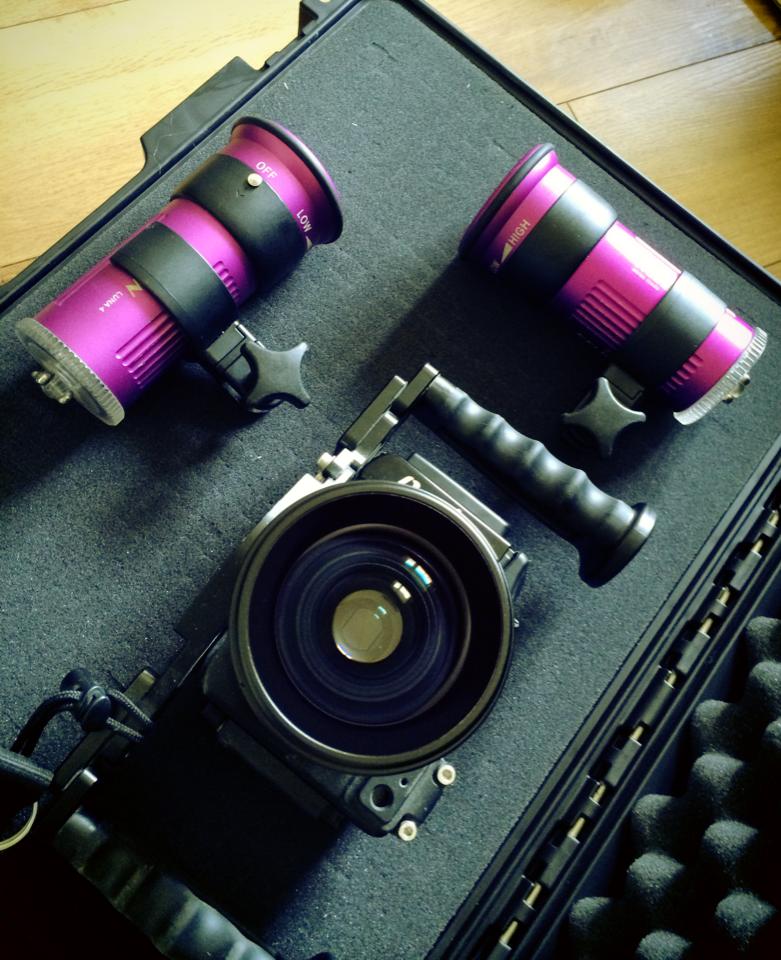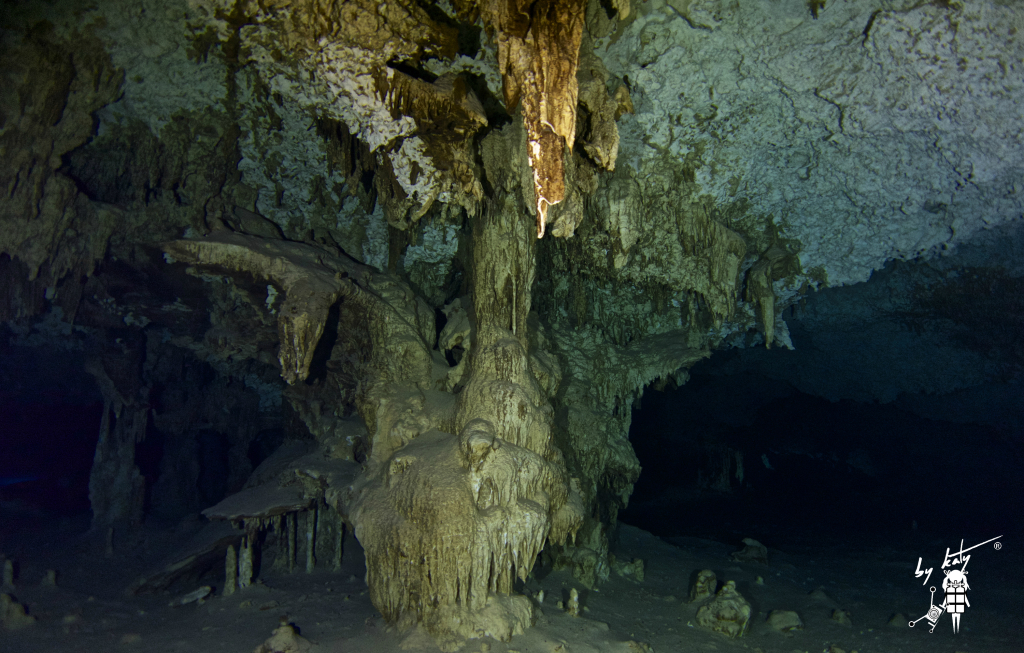By Katy Fraser
I’ve been filming pretty much my whole diving career. It started with a little shop on Koh Tao, Thailand, filming open-water students, working off commission and trying to convince poor backpackers they should buy the €50 DVD instead of attending pub a crawl — how times have changed. In saying that, I would not trade that experience for the world, as that’s where my love for underwater filming was born, and the long hours and fast editing built the strong foundation I have today. I believe it’s not just the filming that’s important at this level but equally so the editing. You can get great footage, but it’s useless if you cannot present your work in an exciting and compelling way.
After a year of building up both these skills, it was time to move on. I dove with no camera and felt that there was very little point to being in the water if I couldn’t capture it. At the age of 18, I believed I was very lucky to find direction so young, so I decided to hold onto that and pursue it with everything I had.
I wanted to film on a larger scale and set my long-term goals to eventually include the kind of documentary film with a David Attenborough voiceover. But after talking to many professional videographers there seemed no direct route to this goal; some were divers first and fell into photography; some had a lot of cash and bought their way in by purchasing tens of thousands of pounds worth of equipment; some didn’t even reply or were very vague about how they achieved professional success. I was left with a large gap and lots of tiny stepping-stones between where I was and where I wanted to be, so I tailored my own route.
My theory was that since I already had a firm filming and editing foundation, if I could become a trained diver in all fields and were able to dive to reasonable depth in any conditions, I would not only build up a portfolio along the way and make contacts, but I would also be employable. I soon found myself in Dahab, Egypt to carry out an internship over three months to become a full trimix diver under the mentorship of Team Blue Immersion. The three months soon turned into well over a year, and during this time I took on a technical videographer role for the company while working my way up to tec instructor. I managed to add two commercials for a full-face mask company called Ocean Reef and one commercial for Hollis to my portfolio, as well as photographs these companies shared on their social media sites.
Since starting my career in technical diving, I realized that diving to these limits is not my future goal, and like all things, my time Dahab eventually came to an end. I got an offer from Planet Scuba Mexico to shoot some promotional film. This required me to be fully cave trained, so we agreed that I should receive the courses and training in exchange for providing them with the promotional film. I came to Mexico to seek a different kind of depth, one that’s horizontal rather than vertical, leaving the light zone to witness the most untouched wonders of nature, formed over thousands of years. So here I am in the heart of the cenotes, at present halfway through my cave courses, trying to figure out at what point to take my camera rig into this environment.
I started out with the cavern and intro to cave courses with Kelvin Davidson from Pro Tec and Markus Teupe from Planet Scuba Mexico. I can’t recommend them enough and have a lot of confidence in their training. It has been nice to meet instructors and guides who have also come from a deep diving background and it’s interesting to learn from their views and experience.
The program focuses on gas allowances, laying lines, emergency procedures and accident analysis. Cave diving is very refined all the way down to ending your frog-kick with an upward motion, and there are strict rules about standardized equipment, to the extent that you will not be allowed to get in the water if you are missing a piece. There are no shortcuts in this industry and I love it because it is this mentality that makes diving challenging and interesting for me. There’s no slacking in cave diving and the standard is always high.
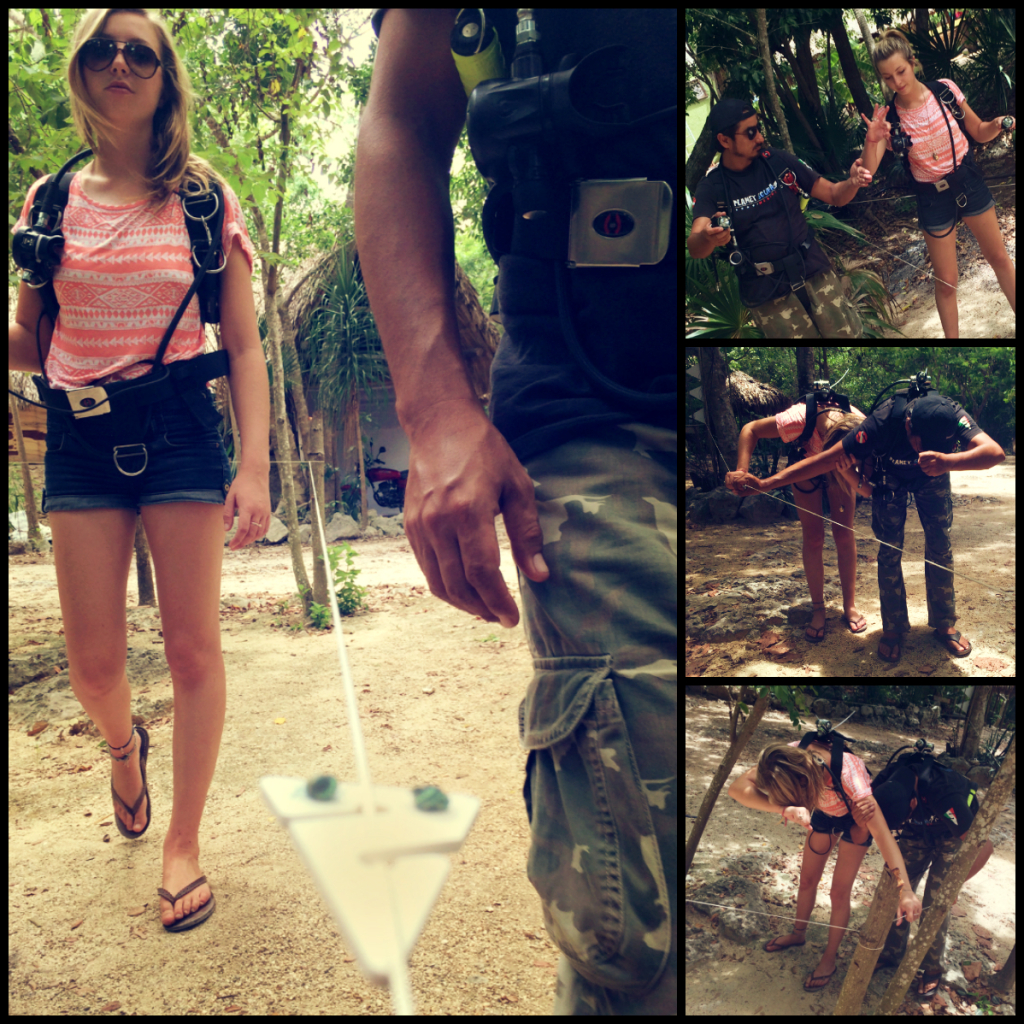
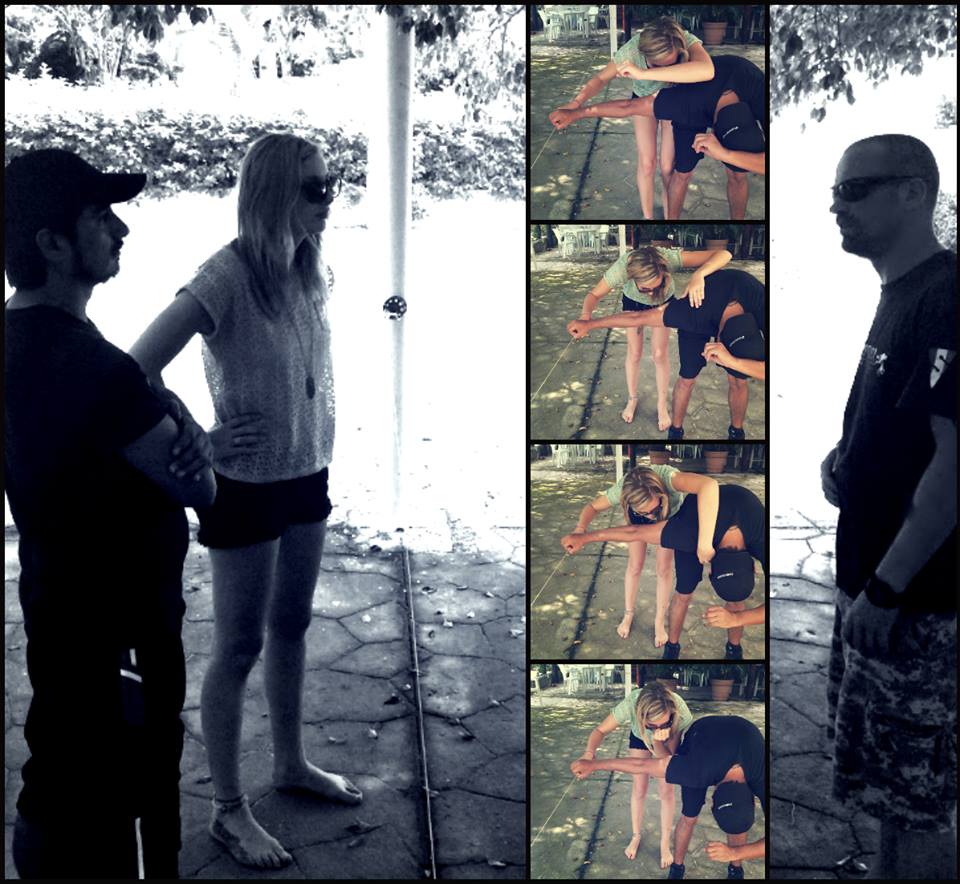
The caves on the Yucatan Peninsula of Mexico are predominantly shallow, allowing the diver to travel a significant distance within the caves without reaching his no-decompression limits. It became apparent over the duration of my cave course and after reading a lot of articles how important gas calculations are for this type of diving. As my instructor told me, “I can potentially unbend you, but I can’t undrown you.” The ceiling I have during my dives is no longer decompression, but a thick tunnel of rock with no access to the surface in many locations until you return to the entry point.

There are an awful lot of factors to consider when taking a camera into a cave environment. Since I am a newly qualified cave diver, I believe it would be irresponsible for me to jump straight in and start shooting film. It’s obviously quite different to film in an overhead environment as opposed to open water. In between my courses I have been shooting cavern lines in order to get a feel for angles and come up with creative light placement. Lack of light is one issue and also the scale of some of the rooms is huge, so to get an accurate representation of what I was seeing I invested in a set of high-powered 4000 lumen Keldan video lights and a wide-angle lens.
So far I’ve gotten some nice results, but quickly discovered it’s not about lighting the whole area up like a football field, but rather combining these lights (mainly turned down on the lowest setting, and placed as far away from the lens as possible) with ambient light from the cenotes and diver’s lights to create depth in the photo and video.
It struck me while filming the caverns just how disorientating the dives are here, despite the fact they are classed as recreational dives and I’m surrounded by people on single tanks, the systems are incredibly complex and it’s quite easy to get lost if you’re not paying attention to the line. There are many jumps running in all directions and very quickly you could find your self out of the cavern zone and into a cave. This is just the first rung of the ladder I have to climb.
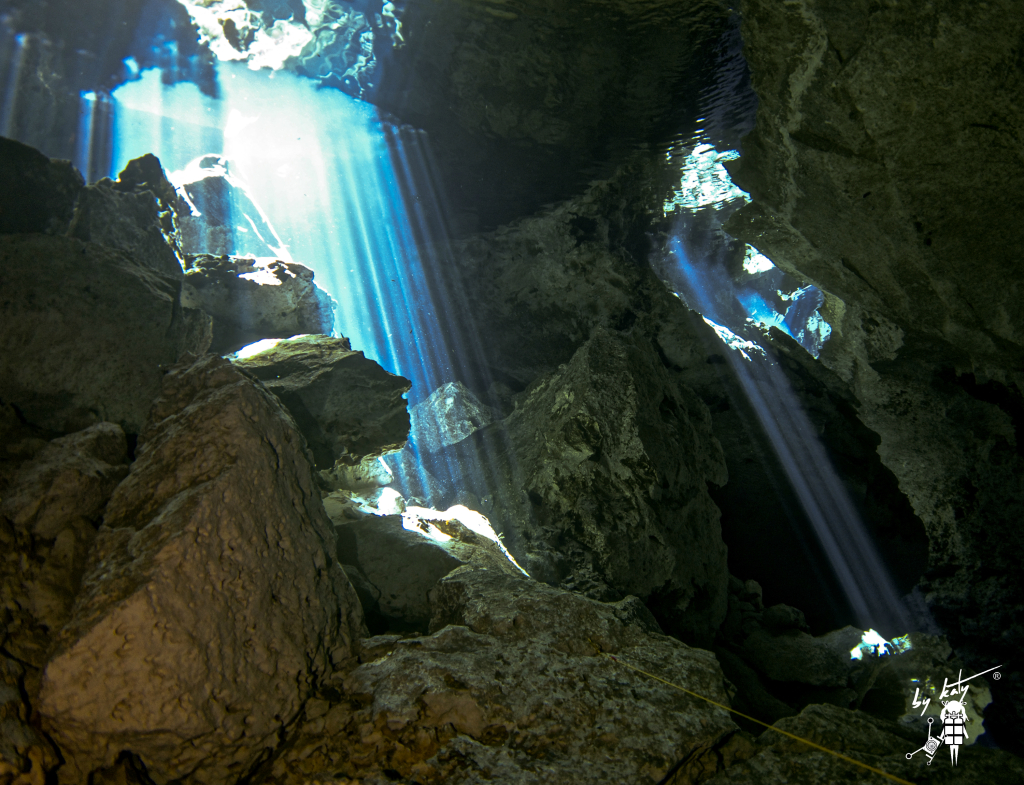
The difference between diving caverns and diving caves seems vast. I’m beginning to put my Intro to Cave course to some use, diving intro lines with Markus into the cave systems, practicing tie offs and connecting in and out of the cave. The learning curve seems pretty steep as with each dive I can feel my eyes opening more and more to my surroundings. The perceptual narrowing is slipping away and the skills are beginning to become second nature. This, on the other hand, presents a new hurdle. Being aware of your surroundings on the dive can be nothing but a good thing, but right now the newness of my surroundings is quite distracting. Diving these new environments is extremely exciting and incredibly beautiful, as we dip in and out of haloclines, pass by vast rooms with air pockets on their ceilings, creating a mirror like effect and fin out of the darkness into cenotes which cast a fantasy glow onto the cave system decorated with stalactites. It’s all really something to behold and of course I am itching to film, but on the turn around everything looks different. In some places I find I can’t reference anything, which sparks irrational doubt in my mind as to whether we are still on the same line. “Trust-me dives” aren’t really my thing, and taking a camera along is unrealistic right now given my level of experience, so it remains a good number of dives away.
I left a month between my intro course and full cave because I wanted to dive and master the skills I have learned before adding more on top, and also become comfortable with the distance I am traveling into the cave. My initial ties offs and connects into the cave have become faster and so the dive into the cave is further. I catch myself sometimes, especially when I’m 25 minutes into the line and am nowhere near my turn-around point on gas, having strange realizations of where I am and what I’m doing. I guess in many ways it is unnatural for humans to be underwater to start with — add darkness and no access to the surface for long periods of time and it equals one hell of a lot of respect for the environment you’re in and the safety procedures you have learned.
One of the major advantages in this area of the world are the many experienced cave divers from all walks of life. I have had the pleasure of meeting a fair few, and with their guidance over the next few weeks I’ll be diving selected lines repetitively and start building up to filming that way. This will help confirm the layout of the cave in my own mind, allowing a lot of time to choose shots and areas I know I want to film, note down the times I reach them and plan the filming dives accordingly.
Stay tuned!


